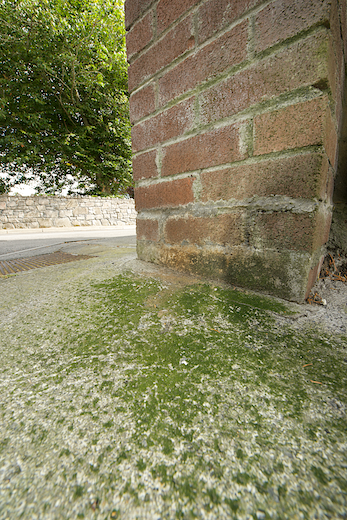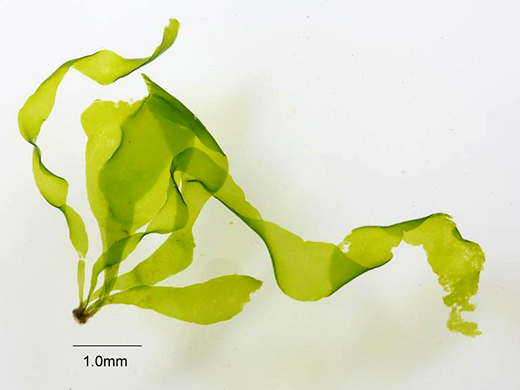Prasiola calophylla (Carmichael ex Greville) Kützing

Common names: None known.
Description: Small (10-20 mm long and 2-300 µm broad), ribbon-like fronds when wet (below), often expanding to form V-shaped, recurved fronds, shiny and adherent to surfaces when dry. Most common in spring and early summer; apparently surviving as basal fragments and regrowing in the following winter. However, in shaded situations, plants can be common in summer. Generally forming an irregular sward.


Habitat: On concrete and paving stones at corners where dogs urinate on upright posts and walls. Strictly speaking, this is a terrestrial species but it commonly occurs in maritime situations.
Key characteristics: unusual habitat and ribbon-like fronds.
Distribution: common on Atlantic coasts in the colder waters of the NE Atlantic south to N Spain. More recently reported from continental cities such as Innsbruck in Austria. Also reported from the Antarctic.
Note: This species was originally discovered, by Captain Carmichael, on a "stone" outside a Clergyman's door on the island of Lismore in Scotland; there was undoubtedly a household dog intent on marking his territory. Recently, and unsurprisingly, a mycosporin-like amino acid called prasiolin and involved in UV-protection has been discovered in this species.

Photographs: Galway, top two © M.D. Guiry; Cornwall, lower two © David Fenwick, Snr.





